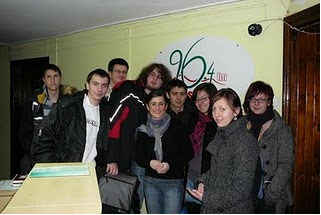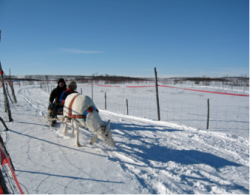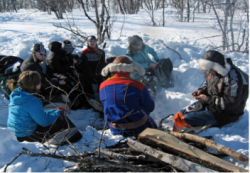
 |
 |
 |
|
Meetings |
 |
|
Articles |
 |
Magazines |
 |
|
Student Papers |
 |
 |
 |
 |
 |
 |
|
|
 |
 |
|
Coordinating school: Zespół Szkół w Bielawie Persons Coordination: Anna Miśkiewicz Anna Paździora 
|
 |
 |
 |
News |
||||||||||||||||||||||||||||||||||||||||||||||||||||||||
|
| ||||||||||||||||||||||||||||||||||||||||||||||||||||||||
 | ||||||||||||||||||||||||||||||||||||||||||||||||||||||||
as a European asset' in our eyes |
||||||||||||||||||||||||||||||||||||||||||||||||||||||||
|
Comenius project was very interesting. I met many curious people. I visited Italy (do not remember the towns' names) and Ziemia Kłodzka. I liked it very much.
Grzegorz Szymczak
Date of inclusion on the website: 13.07.2010
|
||||||||||||||||||||||||||||||||||||||||||||||||||||||||
 | ||||||||||||||||||||||||||||||||||||||||||||||||||||||||
|
26th January 2010 a students from Zespół Szkół in Bielawa with teacher Małgorzata Greiner visited local radio station in Dzierżoniów.
Director of the Radio Sudety, Renata Brajter, narrated about work at the radio station. Students had an opportunity to know how to be good redactor and presenter.
They have known other employees of this radio: Tomasz Dudlej who is redactor of music and Janusz Mocarski – presenter.
A pupils watched their work with a great interes.
Date of inclusion on the website: 26.01.2010
|
||||||||||||||||||||||||||||||||||||||||||||||||||||||||
 | ||||||||||||||||||||||||||||||||||||||||||||||||||||||||
|
On the 12th January we got on a bus that took us from Villaluenga to Toledo, to visit a radio station named “Radio Aquí”.
We were 12 people and, of course, we were very excited. There wasn’t anybody who didn’t seem to be nervous, even our teacher, Miguel Ángel.
Date of inclusion on the website: 12.01.2010
|
||||||||||||||||||||||||||||||||||||||||||||||||||||||||
 | ||||||||||||||||||||||||||||||||||||||||||||||||||||||||
|
The NRK Sámi Radio is a unity of the Norwegian Broadcasting Company, and they send radio and television programmes which are intended for the Sámi people. The radio broadcastings started in 1946 in Tromsø, and the host was Katrine Johnsen.
In 1976 NRK Sámi Radio was moved to Karasjok, and in 1984 they moved into their present building. From 1991 the channel also broadcasted TV-programmes for children every day. From the autumn 2001 they have produced the news broadcasting «Ođđasat» together with the Swedish Broadcasting Company and the Finnish Broadcasting company.
The NRK Sámi Radio also produces TV and Radio programmess for NRK's local news.
Date of inclusion on the website: 10.01.2010
|
||||||||||||||||||||||||||||||||||||||||||||||||||||||||
 | ||||||||||||||||||||||||||||||||||||||||||||||||||||||||
|
Turkish is a very ancient language and belongs to the Altaic branch of the Ural-Altaic family of languages.
As one of the most widely spoken languages in the world, it is spoken by almost 65 million people in Turkey and over a large geographical area in Europe and Asia.
Date of inclusion on the website: 13.10.2009
|
||||||||||||||||||||||||||||||||||||||||||||||||||||||||
 | ||||||||||||||||||||||||||||||||||||||||||||||||||||||||
|
The Turkish alphabet contains 29 letters. There are 8 vowels and 21 consonants. Although letters Q, W, X do not appear, there are 6 more letters, namely; Ç, G, Ş, Ö, Ü, I.
The other letters are the same in both alphabets, but they are pronounced differently.
A as in 'ugly' J as in 'garage' B as in 'bell' K as in 'kettle' C as in 'jealous' L as in 'leg' Ç as in 'chair' M as in 'men' D as in 'desk' N as in 'never' E as in 'elephant' O as in 'orchestra' F as in 'fast' Ö as in 'urge' G as in 'get' P as in 'pen' H as in 'helicopter' R as in 'red' I as in 'number' S as in 'sell' I as in 'insect' Ş as in 'shelf' T as in 'telephone' U as in 'oops' Ü as in 'fruit' V as in 'vegatable' Y as in 'yes' Z as in 'zebra'
Date of inclusion on the website: 13.10.2009
|
||||||||||||||||||||||||||||||||||||||||||||||||||||||||
 | ||||||||||||||||||||||||||||||||||||||||||||||||||||||||
|
The 26 March the entire school spent a nice day out. The weather was very cold in the morning. But as the sun started to warm a bit it was fine.
The sun was shining from a cloudless sky. We had the opportunity to ride in a sled behind a reindeer and throw a lasso. There were also two tipis where we could go in if we felt it was too cold.
There we were served boiled reindeer meat and broth.
The second year pupils are enjoying themselves by the fire.
Date of inclusion on the website: 10.02.2009
|
||||||||||||||||||||||||||||||||||||||||||||||||||||||||
 | ||||||||||||||||||||||||||||||||||||||||||||||||||||||||
|
Det joikes i Spania om dagen, og bade spanjoler, italienere, tyrkere og polakker deltar i koret.
Date of inclusion on the website: 10.02.2009
|
||||||||||||||||||||||||||||||||||||||||||||||||||||||||
 | ||||||||||||||||||||||||||||||||||||||||||||||||||||||||
|
A week before leaving for a meeting in Toledo the Polish comenius team decided on the logo competition. There were thirty-one students' works to choose from. So it was a really tough task.
According to the logo criterion, students put the whole name of the project or the acronym EMU in their designs. To show the cooperation among the five countries, students put some symbols of the European Union as well as the symbols of the five partner countries.
After a long discussion and voting, logo number 14 won. His author is a student of class I ms Mateusz Kopytko.
Date of inclusion on the website: 10.02.2009
|
||||||||||||||||||||||||||||||||||||||||||||||||||||||||
 | ||||||||||||||||||||||||||||||||||||||||||||||||||||||||
|
The knowledge of a journalist's workshop and ability to write good articles are not the only features which let to create a newspaper. There is one more feature - edition. The printing company Edytor in Dzierżoniów was the last but not least place to be visited by our students. During their visit on the 4th of February, 2009, students of Zespół Szkół Bielawa got to know a range of printing service, edition proceeding, modern technologies and printing equipment. They observed a process of exposing to format A1, producing cardboard packagings,leaflets and business cards. Students also visited a bookbindery. The owner of the printing company Mr Tomasz Ligienza was the person to take our students for a trip in the world of printing. He presented printing devices and how a printing point works. Workers of the company explained how the devices work. It occured to be very interesting to our students. All the students got nice presents and what is the most important they gathered a great experience which can be useful in further lives. Date of inclusion on the website: 04.02.2009 |
||||||||||||||||||||||||||||||||||||||||||||||||||||||||
 | ||||||||||||||||||||||||||||||||||||||||||||||||||||||||
|
The local market of newspapers in not only Tygodnik Dzierżoniowski and that is why our students visited editorial office of Wiadomości Bielawskie on Tuesday, the 3rd of February, 2009. They had an opportunity to meet the editor in chief Mrs.
Barbara Lesiewicz. The students mainly asked about work of a journalist, how the material is collected, what makes an article interesting, what features a good journalist should have. A nice atmosphere of conversation caused that the students felt free to ask other questions.
Politics, times of communist Poland and its censorship, journeys, education around the world were the topics that involved students into talk.
A reflection after the meeting was that a journalist is a person who has got a wide knowledge and interests.
Date of inclusion on the website: 03.02.2009
|
||||||||||||||||||||||||||||||||||||||||||||||||||||||||
 | ||||||||||||||||||||||||||||||||||||||||||||||||||||||||
|
One of the tasks of the project is to familiarize students with work of local newspapers. That is why the editor in chief of Tygodnik Dzierżoniowski Anna Augustyniak conducted a short workshop in Zespół Szkół in Bielawa on the 13th of January 2009.
The students found out what are the latest tendencies in creating a text, its heading and content; which topics help to hold a high level of sale. They also learnt that an editor in chief does not have to finish professional journalistic studies.
The young journalists of our school promised to write their drafts according to rules of arranging news in a newspaper article. The editor in chief invited students to cooperation with Tygodnik Dzierżoniowski and promised to meet with them once again.
Date of inclusion on the website: 13.01.2009
|
||||||||||||||||||||||||||||||||||||||||||||||||||||||||
 | ||||||||||||||||||||||||||||||||||||||||||||||||||||||||
|
It is time of the northern light in Norway. Pictures taken by Kjell Sarre from Karasjok.
Date of inclusion on the website: 12.01.2009
|
||||||||||||||||||||||||||||||||||||||||||||||||||||||||
 |
|
Date of inclusion on the website: 08.01.2009 |
 |



